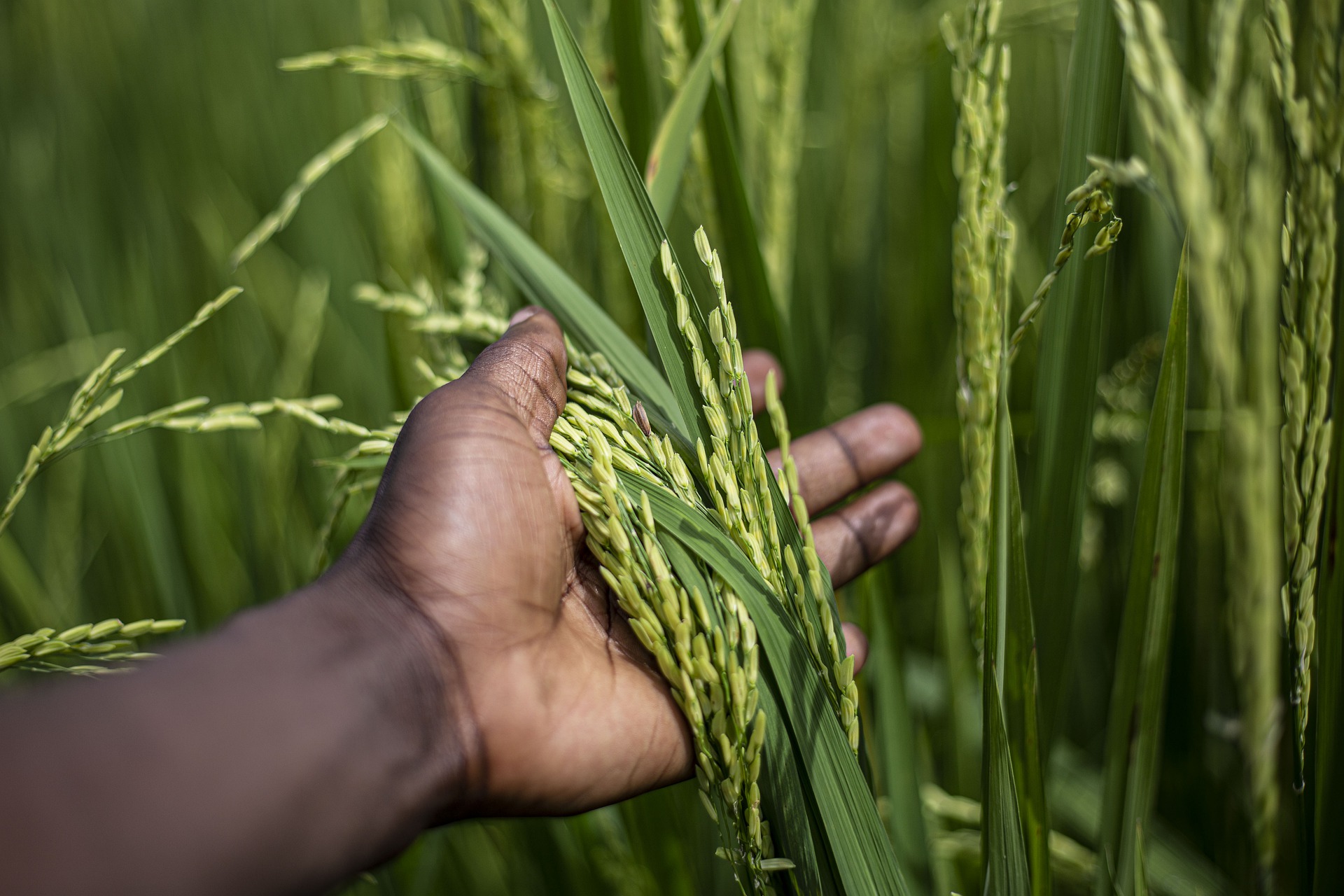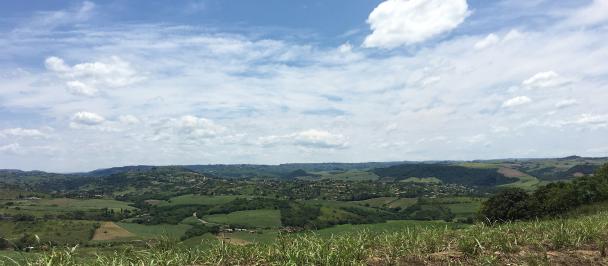Food Forward: Transforming our Food Systems to Make Peace with Nature
October 15, 2021

Recent studies estimate that food systems are responsible for over a third of global greenhouse gas emissions. If we want to address systems that drive climate change, food matters.
A food system is defined as a system that embraces all the elements (environment, people, inputs, processes, infrastructure, institutions, markets and trade) and activities that relate to the production, processing, distribution and marketing, preparation and consumption of food and the outputs of these activities, including socio-economic and environmental outcomes.
A sustainable food system is a food system that delivers food and nutrition security for all in such a way that the economic, social and environmental bases to generate food security and nutrition for future generations are not compromised. You can learn more about food system concepts and applications here.
At the United Nations Development Programme (UNDP) Accelerator Lab (AccLab) in South Africa, we have started with three key strategies – digitalisation, localisation, and circularity (with innovation and sustainability underpinning each). Through these strategies, we have designed a portfolio of interventions that ensure we nudge food systems at multiple leverage points.
In developing countries, the COVID-19 pandemic has exacerbated poverty and inequality, resulting in far more families struggling to access food. Reports claim that COVID-19 disrupted formal and informal food chains, logistics and supplies, and at the global scale had potentially doubled food insecurity and chronic hunger by the end of 2020. The advent of the pandemic highlighted vulnerabilities within food systems which can provide lessons in how we can respond to anticipated shocks from future crises, such as climate change, and build greater resilience and sustainability into systems.
The UNDP AccLab team in South Africa experimented with an alternative method of food distribution to respond to the immediate needs concerning food insecurity in the face of the pandemic. Unemployed youth in communities were mobilised to identify vulnerable households, conduct vulnerability assessments, and provide an e-voucher through a cloud-based transactional platform which could be redeemed at retailers or local informal traders. The use of this technology allowed UNDP to pivot to provide emergency humanitarian assistance while simultaneously surfacing lessons to inform future development programming in this area.
This distribution mechanism reduced environmental costs related to the traditional provision of food parcels such as packaging, storage, waste, and delivery. Additionally, this provided recipients with some autonomy in what they chose to purchase, as well as creating opportunities to support local informal economies. And finally, through existing community networks and technology, this created a space for individuals or organisations outside of the development ecosystem to contribute to the food security of their communities. (Please see this blog for further information).
Underpinning our second intervention is that local production and consumption are core principles of sustainability. For example, of the greenhouse gases food systems produce, the distribution of food contributes 29% and is expected to continue growing. Food systems are also becoming more energy-intensive in retail, packaging, transport, and processing. By localising food systems – in other words, increasing food production in local systems – we can eliminate transport and distribution costs, decrease the need for packaging, and reduce processing needs as the food can be accessed and used while still fresh.
As such, UNDP has invested in supporting the development of backyard gardens in communities, using innovative methods such as keyhole, trench, and tower gardens, using greywater for irrigation and locally-produced organic waste for compost. By decreasing dependence on external systems for food, internal resilience against shocks is increased. The system will also be more adaptive to local needs and preferences, and so result in less waste. (Please see this blog for further information).
An estimated third of all food produced globally is wasted. This produces a triple-negative effect: the resources that have been used to produce the food such as water and energy are wasted; food waste contributes to food insecurity; and food waste is responsible for 6 – 8% of anthropogenic greenhouse gas emissions as it decomposes in landfills. By applying concepts of circularity, this organic matter can be transformed from detrimental waste to useable and valuable products.
In our third intervention, UNDP is investing in supporting local entrepreneurs and innovators to build businesses with food waste solutions. For example, these innovators are pioneering several innovative food waste solutions such as using solar power to dehydrate and preserve surplus food; creating small biodigesters which can be used in homes to transform organic waste into biogas; producing bins for onsite capture, containment, and processing to produce organic compost; developing moulds for worm farms that retail as full DIY kits for vermiculture for both domestic and industrial sites; using black soldier flies to produce sustainable animal feed, insect protein, and chitin for water treatment; designing a kitchen waste bin that produces compost within hours; and developing an application enabling food retailers and eateries to sell their surplus and reduced-to-clear food directly to the public at a reduced cost. (Here are some of our entrepreneurs receiving the good news that they had been selected from our innovation challenge). These solutions are providing options for individuals, communities, and organisations to make sustainable choices.
Through these projects we are disrupting the ‘beginning’ of the food chain with localisation, and the ‘end’ with circularity. But we also need to zoom out and assess the building blocks of the system itself by not only looking at how food is produced, processed, transported, and used, but WHAT foods we prioritise in the system. One approach that could significantly reduce the carbon footprint of food systems is to identify and scale the use of foods that do not have a negative environmental impact in their production, and that additionally provide co-benefits (in other words have a positive impact on multiple Sustainable Development Goals (SDGs)).
The UNDP AccLab South Africa is currently exploring seaweed (referring to all edible macroalgae). Seaweed requires no freshwater, land, fertiliser or pesticides to grow. It sequesters a large amount of carbon, decreases ocean acidification, and absorbs pollutants from the water. Seaweed is a highly nutritious food source, and in terms of livestock farming, feeding seaweed can dramatically reduce the methane produced by animals. (Please see this blog for further information). We conducted a baseline study which showed that in coastal communities in South Africa, often with high levels of food insecurity, this valuable resource is not used and there is much potential for uptake. The next phase in our exploration will look at low-tech seaweed production for microenterprise development in coastal communities. Developing the value chains for seaweed and other sustainable ocean ingredients is an extremely important solution to lower the negative impact of food systems and address climate change.
To achieve SDGs, we will need to transform our systems, and most especially those that contribute to climate change. These ideas are practical examples of how we can contribute to sustainable food systems, make choices that decrease our carbon footprint as individuals and organisations, and take action to “make peace with nature”.
For further information on this work across the Accelerator Labs, please listen to this twitter spaces conversation, and if you are working on transforming food systems, please reach out to me at simone.smit@undp.org,

 Locations
Locations
